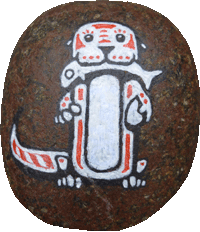6th May 2011
Today I worked out that by the time we’ve finished we’ll have probably had a hire car for about half of our year travelling. That’s assuming we get one for a few weeks in Chile.
This figure surprised me. I’d really thought that we’d spent much less time with a car. It doesn’t do our environmental credentials any good at all either. The total car mileage for this year is almost certainly less than a typical year back in England, but nevertheless we could have left a much lighter footprint on the earth. Many people travel around the world and take quite a lot of effort to do it as environmentally consciously as possible.
The fact is, if you really want to explore the wild landscapes of the world then you need a car. Let’s take our current destination as an example. We’re visiting the Flinders Range National Park in South Australia. It’s a long four hour drive from Adelaide through endless grassland up into the ancient rumpled red rocks of the Flinders. We’re here for two reasons: to hike in the landscape and to look for the rare Yellow-footed Rock Wallaby.
The only way here by mass transport is a bus or train from Adelaide, taking six hours. The most likely location we’d been given for the wallaby was Warren Gorge, 30kms down a dirt road from Quorn. Meanwhile the most astounding landscape in the range is Wilpena Pound near the town of Wilpena. So if the bus drops us in Quorn, how do we cover the remaining 30kms to Warren Gorge? And presumably we have to wait for the next day to get a bus up to Wilpena, where we’re limited to whatever hikes happen to start in or near the town. For accommodation we certainly can’t look for anything out in the wilds.
Kangaroo Island would have been an even better example, and we saw several local tour buses trundling around small packs of multinational youngsters on a prescribed itinerary because without a car that’s the only way you can do it.
So of course you can visit places without a car, but you can’t avoid the crowds and you can’t pursue outdoors interests like wildlife watching if you haven’t got your own transport. If the theme of our travels had been architecture or arts and culture then we’d probably have hopped from city to city without ever touching the wheel of a car. Our food would probably have had less miles on it too, and our accommodations easier to heat. The same is true of living just as much as travelling, I’d say: people who live in cities are on average far more environmentally friendly than people who live in the country. I don’t mean that they proactively think about and care more for the environment, I just mean that those living in a city share transport, heat, food miles, etc.
Related Images:














































That ~is~ a pretty hoppity-thing! CUTE!